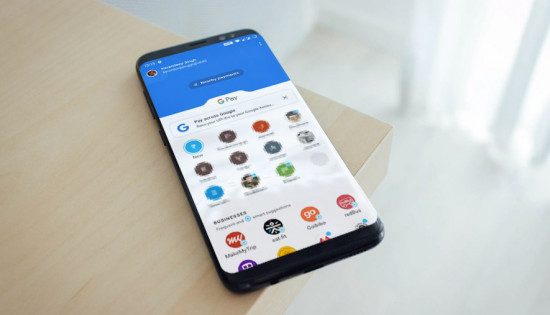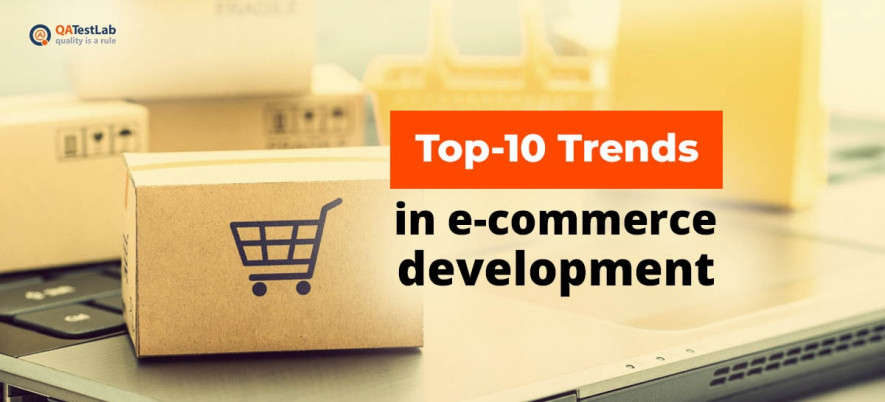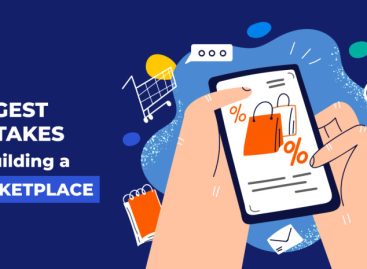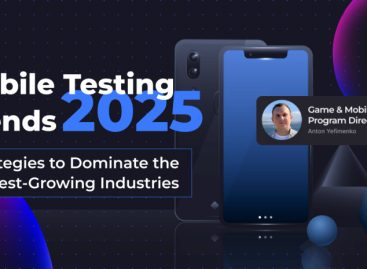- QATestLab Blog >
- QA Basics >
- Types of Software Testing >
- E-commerce Testing >
- Top-10 Trends in E-commerce Development
The E-commerce market expands every day and more people use this resource nowadays. It is estimated that 1,92 billion people shop online. What trends will dominate in the following years? QATestLab knows the answer. E-commerce or electronic commerce denotes buying or selling items and services via the Internet. These articles would be useful for e-commerce product developers, who want to improve their products and services and keep up with the latest tendencies.
E-commerce: Market overview
E-commerce is a quick-growing consumer market which only starts gaining positions. According to the statistics from Statista 52% of customers purchase online and the number of them is likely to grow. It serves as a commercial outlet and provides a wide range of business benefits, such as a larger customer base and business costs reduction. The experts predict the online market to replace conventional stores. If you want to remain competitive, you have to take into account some tendencies in this market. The dominating trends are smartphone purchasing and content marketing.
Top 10 Trends in E-Commerce Development

1. Personalization
Personalization is an indispensable way for all e-market apps or websites to correspond to the individual customers` needs. It is a usual experience for commercial websites or apps to monitor the browsing of their clients. Using cookies, a website can easily adjust to any demands of customers on the basis of the previous browsing experience, location, etc.

2. Smartphone transactions
Smartphone transactions are likely to take a lion’s share of sales in 2020. Due to the pandemic and customers` disability to shop offline the online transaction level is increasing dramatically. It is crucial for QA engineers to develop simple and quick e-commerce software. The checkout time should be minimized. Moreover, QA engineers should check the simplicity and convenience of the buying experience. Such services as Apple Pay and Google Pay can offer a good opportunity for it.

3. Virtual and Augmented Reality
These two technologies provide significant assistance, some people may misinterpret them. Let’s get to know the difference between these terms.
- Augmented reality can be interpreted as an upgraded version of reality by means of using additional features.
- Virtual reality is creating a simulated environment by using computer technology. While using VR reality is completely different than the actual one.
Both these types have their own applications in e-marketing.
- Augmented reality is used for virtual trying on products, such as clothes, makeup products. It allows customers to visualize how a particular item would fit.
- Virtual reality can be used to envision architectural and design projects, using this technology you can choose any items and see what they really look like in your space.
Thus, QA engineers have to examine the application thoroughly in order to provide excellent quality products.

4. Chatbots
The ability to contact the purchaser via chatbots allows customers to get quick and brief responses to their questions. As a result, It helps to improve customer support processes. Moreover, when applied correctly it assists in suitable product promotion. It can expertly guide customers and guide them into the buying process, clarifying their doubts about particular items.

5. 3D Product Display
Although 3D can`t be called a cutting edge technology, it is still trendy. Apart from placing ordinary item pictures, best e-commerce sites use 3D models to provide customers with opportunities either to see main item features without distracting, or to see the environments, the product looks best in. Websites need to have this feature tested thoroughly to present good quality customer opportunities.
6. Drone Shipment
This trend may sound confusing. It can seem awkward for some people to see drones delivering parcels. Yet many people consider it nonsense, such service already exists. Moreover, it is going to become a popular function. This innovation allows extremely fast product delivery, which is going to boost sales. It is the best e-commerce solution considering delivery.

7. Progressive Web Apps
Progressive Web Apps (PWA) possess all normal apps functions, however, the customers don`t need to download them. Instead of downloading cumbersome conventional apps from the app store you just need to install simpler applications. It is a perfect option for e-commerce companies.

8. Voice Commerce
Voice control smart speakers are widely used nowadays in many spheres, like entertainment, housekeeping, and for sure online shopping. The smart speakers market is emerging, so it is going to become a massive trend. These devices make online purchases more convenient, even if the customer is busy. Another benefit of this trend is that these devices gather data about their owners` preferences. This allows companies to adjust marketing strategies so as to meet their customers` needs. The challenge for software testing is to examine this complex functionality.

9. Efficient Layout
The efficient layout makes customers more likely to stay and browse the website or app. As a rule, customers are extremely impatient and if the page doesn’t load in a few seconds they leave the page. it often happens because of elaborate page design. So, many companies are interested in decreasing load times. Accordingly, a testing checklist for QA engineers should include such points as checking the unnecessary elements and optimized images.

10. Applying a Review System
Product reviews affect the vast majority of online purchase decisions. Customers are interested in what the others think about the product they are about to buy. What they read influences their decision. It is crucial to let the customers read honest reviews. It prevents you from blaming your service for offering poor-quality products. It is also important to provide customers with some benefits from product reviews so that both marketers and clients remain satisfied.

Conclusions
To summarize, e-commerce trends are going to significantly contribute to the market development. They are as follows:
- Personalization
- Smartphone transactions
- Virtual and Augmented Reality
- Chatbots
- 3D Product Display
- Drone Shipment
- Progressive Web Apps
- Voice Commerce
- Efficient Layout
- Applying a Review System
These e-commerce development trends are for certain reasons going to shake up the functioning of e-commerce websites and their level of interaction with customers. Following these trends should be interpreted as ideas on how to outplay your market competitors and offer customers a unique experience.
Learn more from QATestLab
Related Posts:
About Article Author
view more articles









No Comments Yet!
You can be the one to start a conversation.